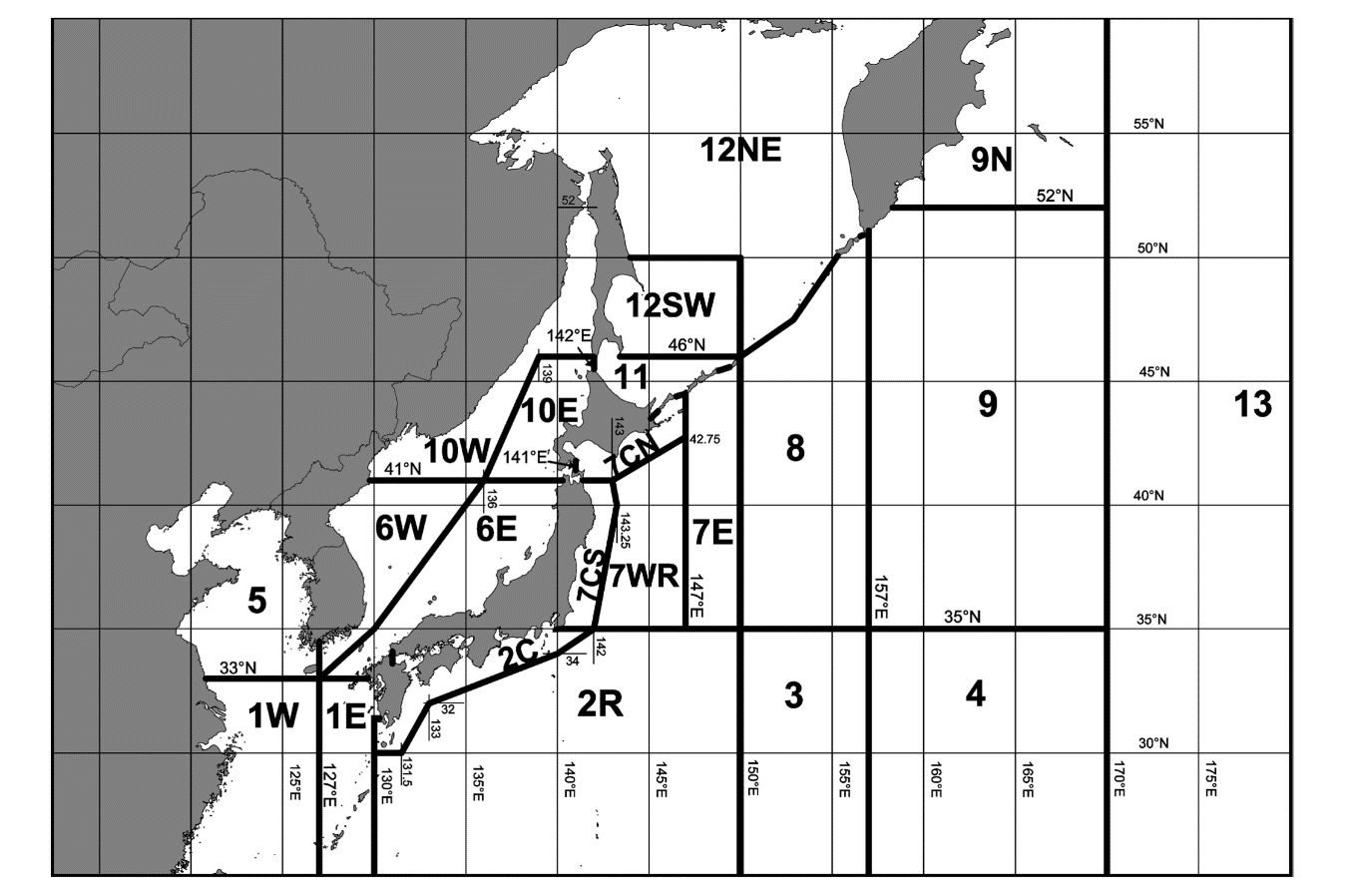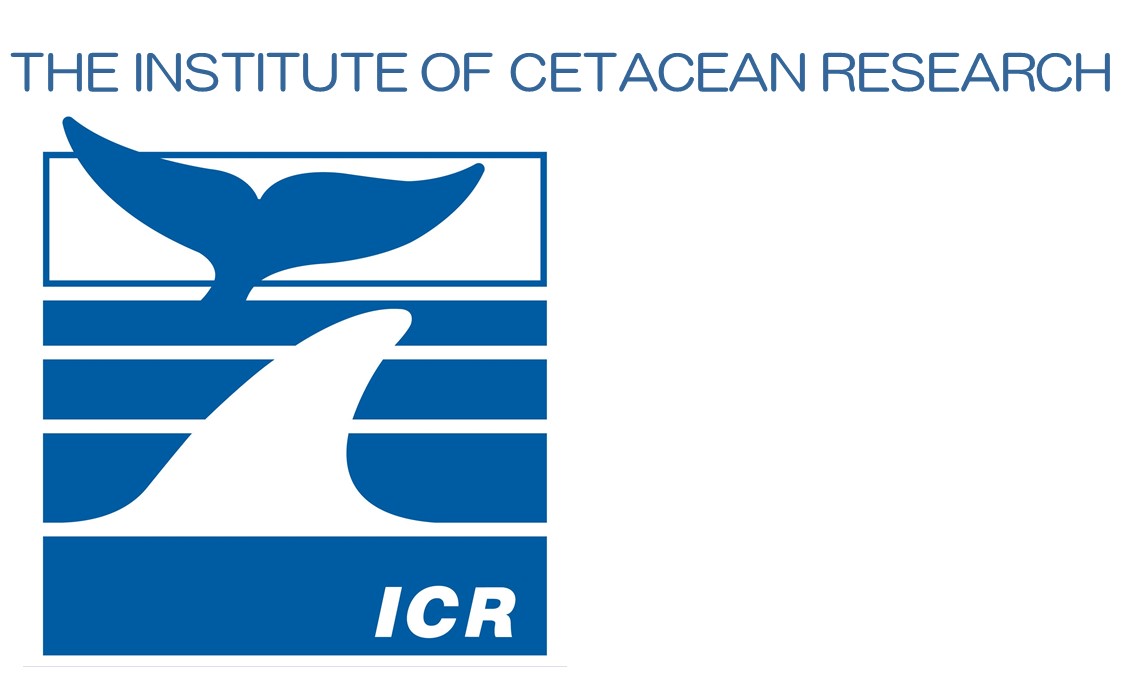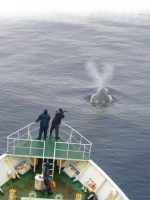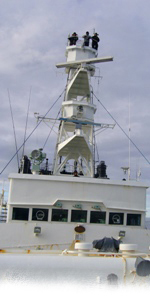- You are here:
- Home>
- English Sitemap>
- RESEARCH>
- Past Research>
- Western North Pacific>
- JARPN
JARPN outline
The main objective of JARPN was to provide information for the International whaling Commossion - Scientific Committee(IWC-SC)'s RMP ISTs for western North Pacific common minke whales, especially with respect to stock structure. Identification of the number of populations and their geographical and temporal boundaries is essential because each may respond differently to environmental stressors, and it is required for evaluating effects of catches when catches occur where stocks mix.
Objectives
Objective 1 (original objective in 1994)
Elucidating the stock structure of common minke whales in the northwestern North Pacific.
In 1993 when the Institute of Cetasean Research (ICR) designed JARPN, the IWC SC recognized two stocks of common minke whales in the western North Pacific: the Okhotsk Sea/Western Pacific (‘O’ stock) and the Yellow Sea/East China Sea/Sea of Japan (‘J’ stock). Within this, there were also proposals for several sub-stocks within the ‘J’ and ‘O’ stocks as well as hypothesized western stock (‘W’ stock) in offshore areas in the Pacific side of Japan. This modelling scenario was complicated, especially since proposed catches would be on migration and not just the feeding areas (the RMP was developed for scenarios of catches on feeding grounds). Research under this objective therefore attempted to clarify the plausibility of the existing complex IWC SC stock scenarios and ideally simplify the hypotheses to be considered.
In 1999, a sub-objective was added to the primary objective: ‘to estimate the mixing rate between the ‘J’ and ‘O’ stocks (this is required in the IST modelling).
Objective 2 (new objective added in 1996)
Feasibility study on the feeding ecology of the minke whales in the northwestern Pacific.
This ecologically oriented objective was developed by ICR in 1996 with a focus on the feeding ecology of common minke whales in the western North Pacific. Previous studies using commercial samples were simply qualitative descriptions of the prey species eaten by whales. The objective here was to obtain both qualitative and quantitative data on prey consumption of whales to support future ecosystem modelling. There was an additional interest to investigate geographical and temporal overlap between common minke whales and some important commercial fisheries in Japan.
Research area and period
Different sub-areas were covered in different years based on the objectives and sub-objectives of the research program (see figure below).

Sample sizes and actual catches
The annual sample sizes and the actual catches of JARPN are shown in the table below.
| Year | Sample size | Catches |
| 1994(F) | 100 | 21 |
| 1995(F) | 100 | 100 |
| 1996 | 100 | 77 |
| 1997 | 100 | 100 |
| 1998 | 100 | 100 |
| 1999 | 100 | 100 |
F: feasibility study.
Review of JARPN research proposal and results
The original plan focused on stock structure of common minke whales was presented to the IWC SC in 1994 (Doc. SC/46/NP1). The plan for 1996-1997 including the new objective on feeding ecology of minke whales was presented to the IWC SC in 1996 (Doc. SC/48/NP1). Subsequently, research proposals of JARPN were presented to the IWC SC annually.
The IWC SC reviewed and commented the proposals and plans using the ‘Old Review Procedure’.Under this procedure the IWC SC reviewed and commented proposals and results either during its annual meeting or by holding intersessional review meetings or workshop open to participation of scientists from all country goverments of the IWC as well as invited participants.
The IWC SC carried out a review workshop of JARPN final research results in February 2000 using the ‘Old Review Procedure’ (see table below).
| JARPN | |
| 2000 (Completed) | |
| Date | 7-10 February |
| Place | Tokyo |
| Chair | John Bannister (Australia) |
| No. Invited Participants | 7 |
| No. foreign delegates | 4 (Norway, Russian Federation, St. Vincent and the Grenadines, USA) |
| No. Japanese scientists | 19 |
| No. local scientists | 0 |
| IWC Secretariat | 1 |
| No. primary documents | 32* |
| Reference | IWC, 2001 pp375** |
*: six of those documents were prepared by foreign scientists.
**: International Whaling Commission, 2001, Report of the Workshop to review the Japanese Whale Research Program under Special Parmit for Pacific Minke whales (JARPN).J,Cetacean res. Manage. 3(Suppl.): 375-413.
There was a comprehensive sample and data set obtained by JARPN (IWC, 2001 pp393).
The JARPN program started in 1994 and 1995 as a feasibility study.The full program started in 1996 and was completed in 1999.
The main research objective of JARPN was the investigation of the stock structure of the common minke whale in the western North Pacific, which was relevant for the IWC SC’s RMP Implementation on this species.
A second objective was a feasibility study on the feeding ecology of the common minke whales in the northwestern Pacific.
The annual proposed sample size for the lethal component of the JARPN was 100 common minke whales.
JARPN proposal and results were duly reviewed and commented by the IWC SC through specific workshops.




